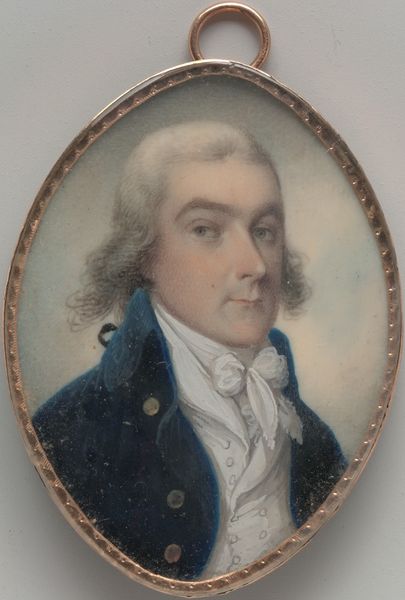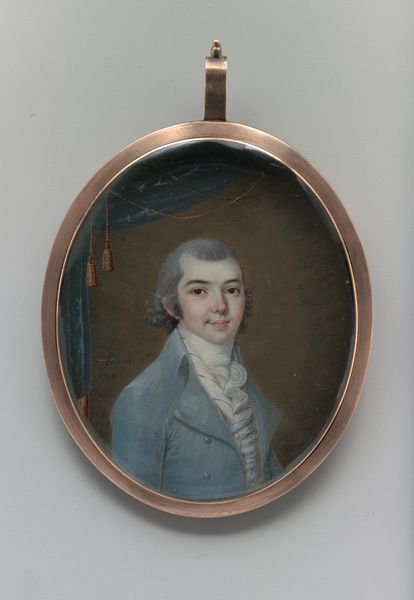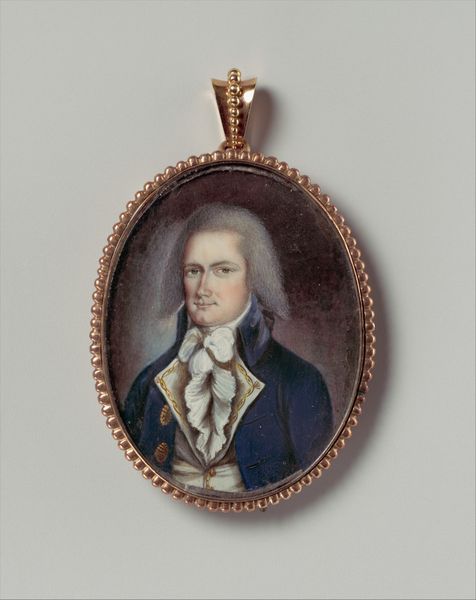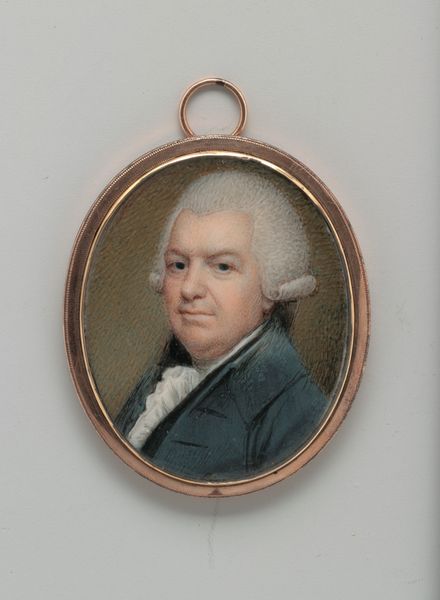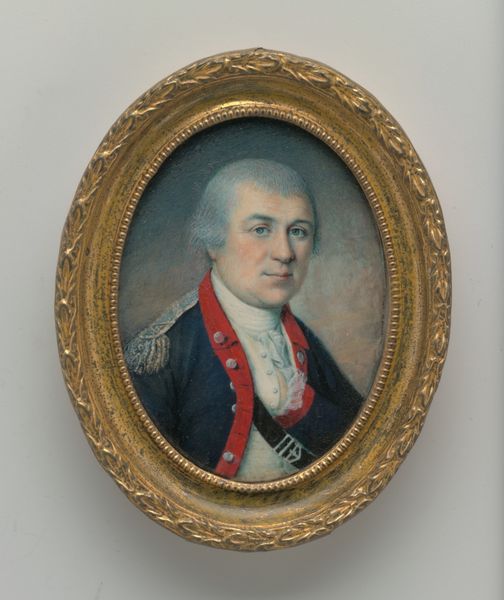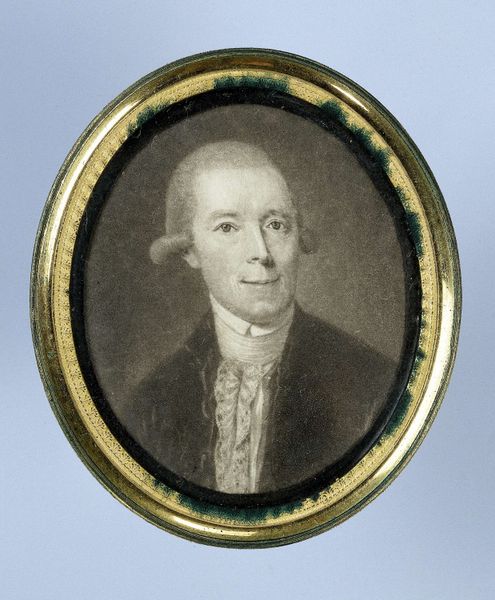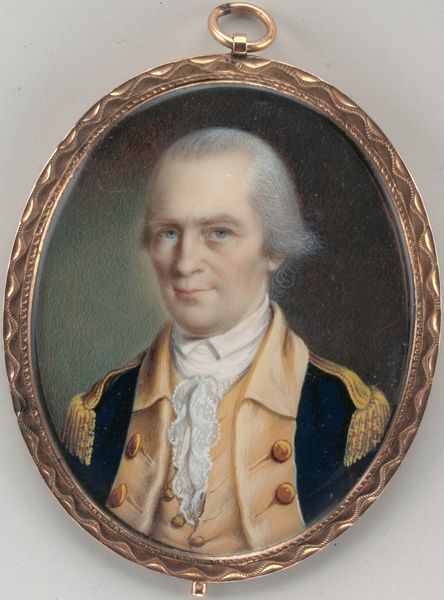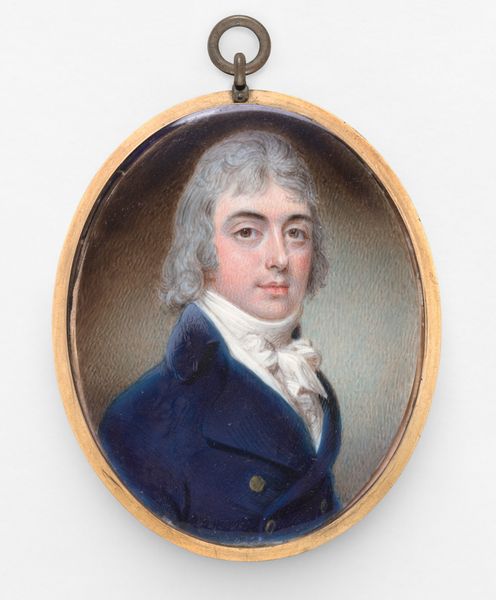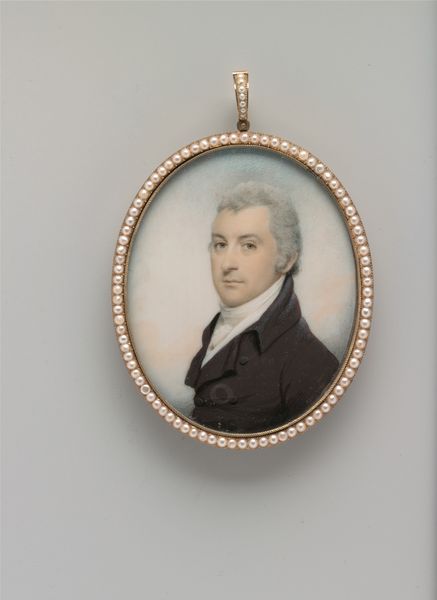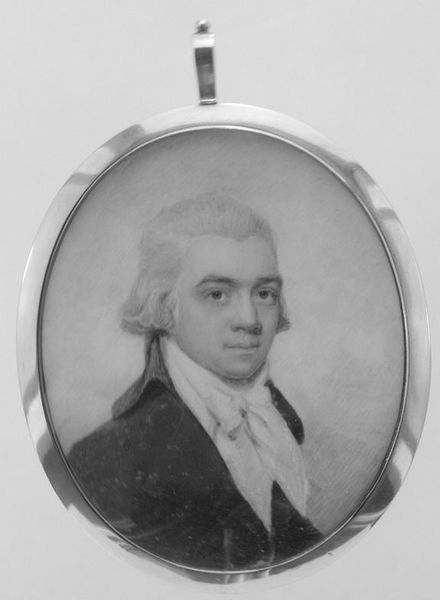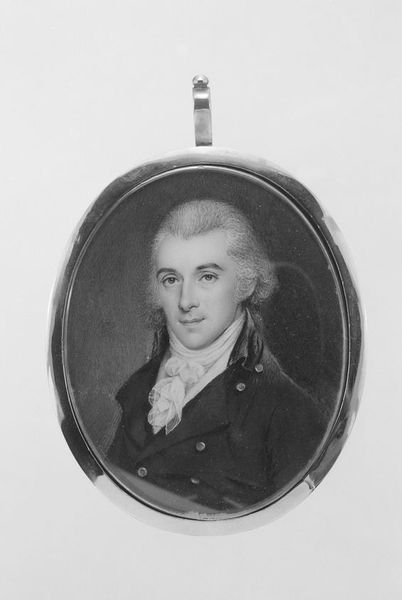
painting, watercolor
#
portrait
#
neoclassicism
#
painting
#
oil painting
#
watercolor
#
watercolour illustration
#
miniature
#
watercolor
Dimensions: 1 7/8 x 1 1/4 in. (4.9 x 3.2 cm)
Copyright: Public Domain
Curator: This watercolor miniature, created between 1787 and 1790, is a portrait of Gulian Ludlow by John Ramage. Editor: There's a certain restraint to it, isn't there? A reserved and formal depiction, fitting for its time, I suppose, but almost… clinical. The gaze doesn’t quite meet ours. Curator: Precisely. Miniatures like this weren't simply portraits, they were powerful signifiers. Gulian Ludlow’s steady, averted gaze conveys his social status— a gentleman of the late 18th century, confident, self-possessed. The averted gaze speaks to modesty, that was quite fashionable, as much as to pride. Editor: The lace at his neck, too, speaks to wealth and privilege, even as the limited colour palette adds to the overall sense of measured decorum. How do you think this miniature functioned within its society? Was it just for display? Curator: Not just display, no. Miniatures often served as keepsakes, emblems of connection, little portable testaments of relationships, kinship, and loyalty that circulated within families and tight social circles. Consider it as a predecessor to the wallet photo. These miniature portraits became symbols in complex social rituals that also served a purpose similar to the symbolic role of coats of arms. Editor: Fascinating! So it's not simply about commemorating Gulian Ludlow’s existence, but also about embedding him within a larger social framework. He's not just a man, he's a representative of a particular class and ideology. In some ways, he has no individual features, because these are subordinated to the representation of his social rank. Curator: Yes, indeed. Every element in the composition—his posture, his clothing, even the precise rendering of his facial features—contributes to constructing an image of status and virtue, speaking to broader concepts of wealth and moral worth associated with prominent citizens in that era. Even in that subtle background colouring! These works had immense power in reinforcing values within families, social classes, and political structures. Editor: Understanding the role these miniatures played—more than personal mementos—transforms how we understand this portrait as more than just aesthetics, it shows us that this work actively helped maintain certain power structures in early America. It's really sobering. Curator: And now it’s on display for future generations to see, where it now represents a very different history.
Comments
No comments
Be the first to comment and join the conversation on the ultimate creative platform.
